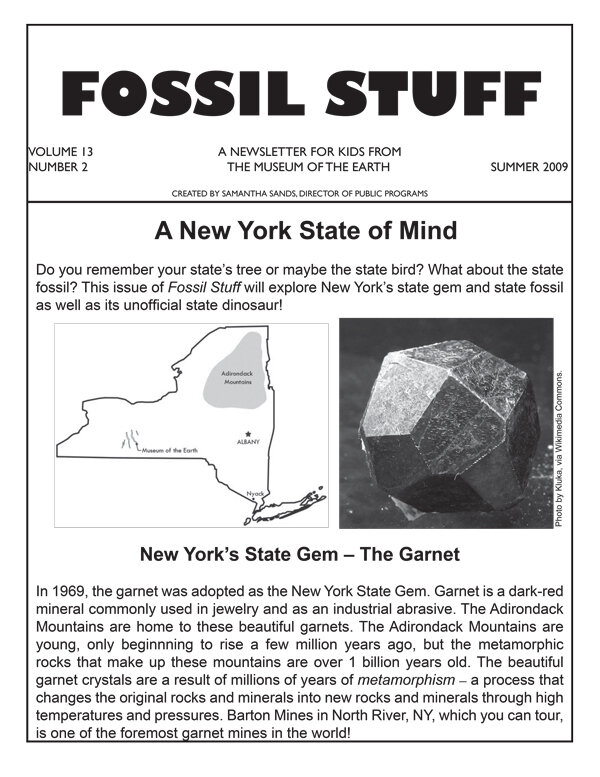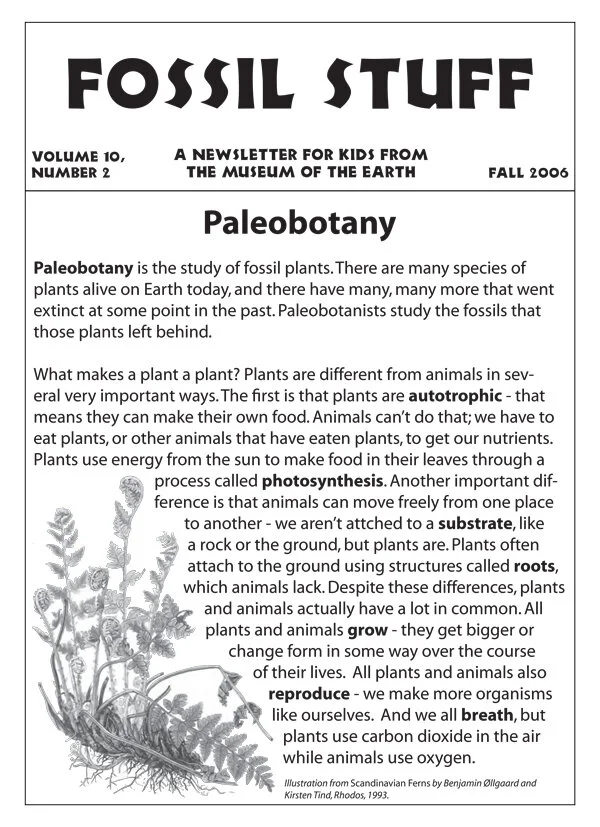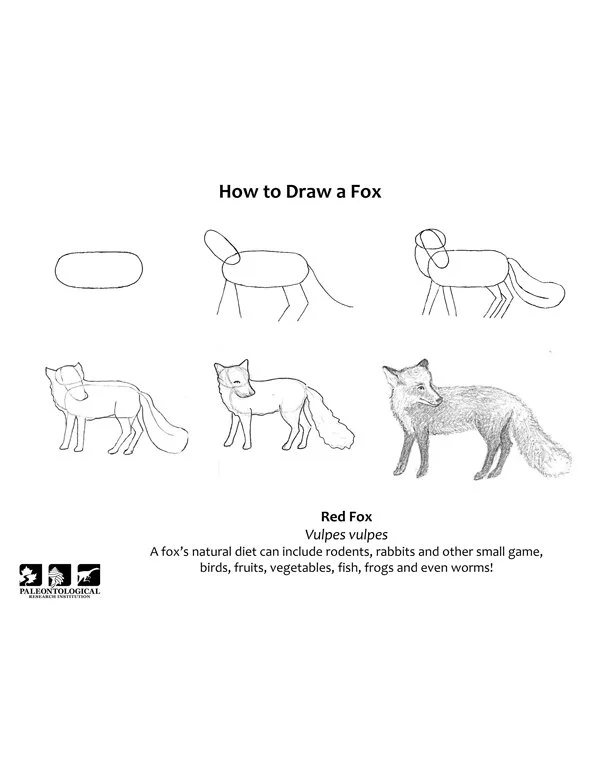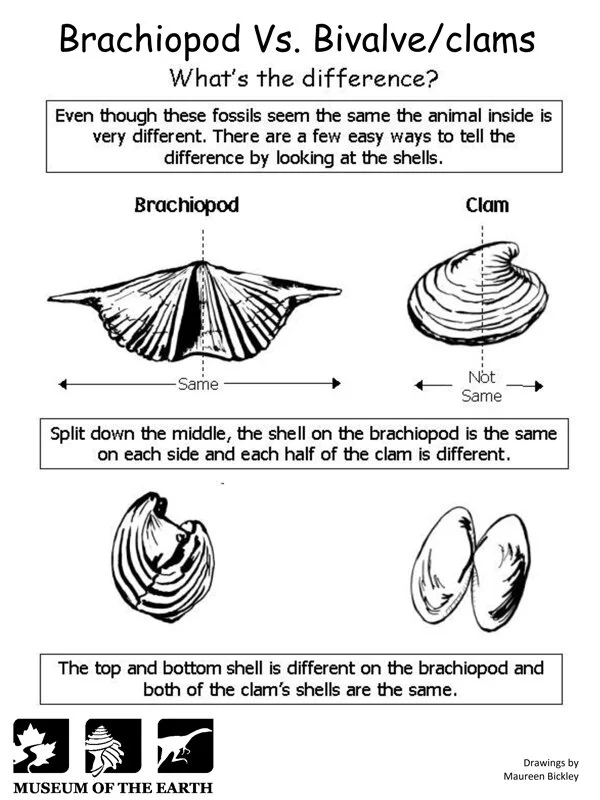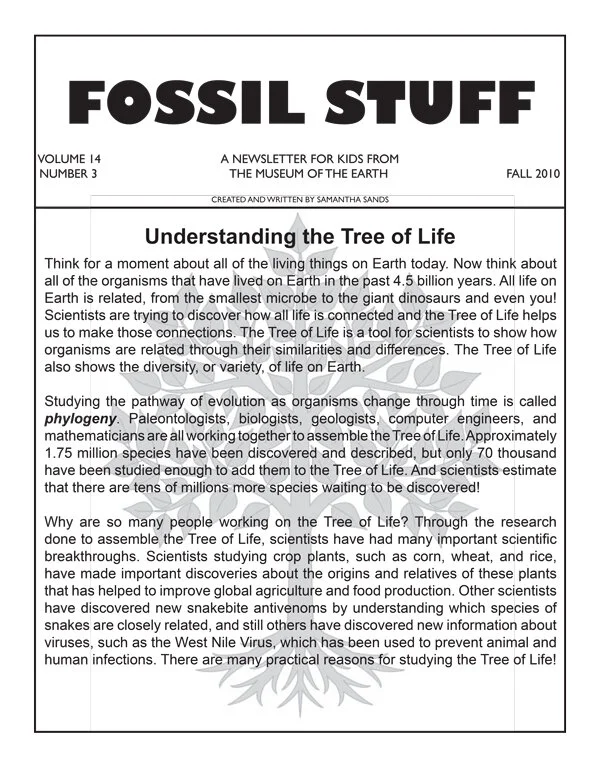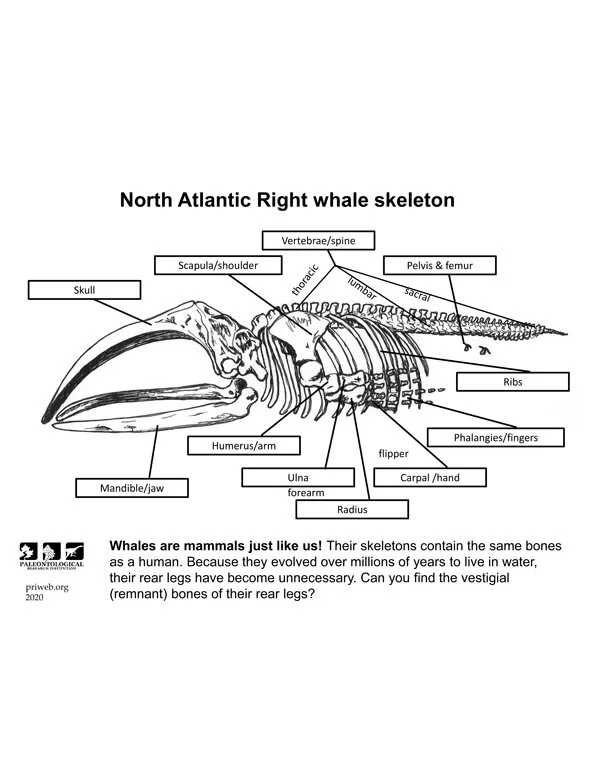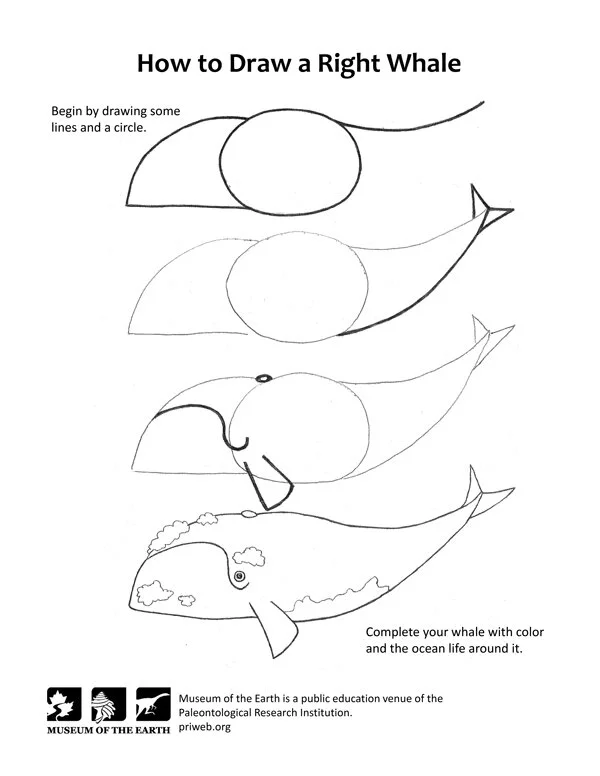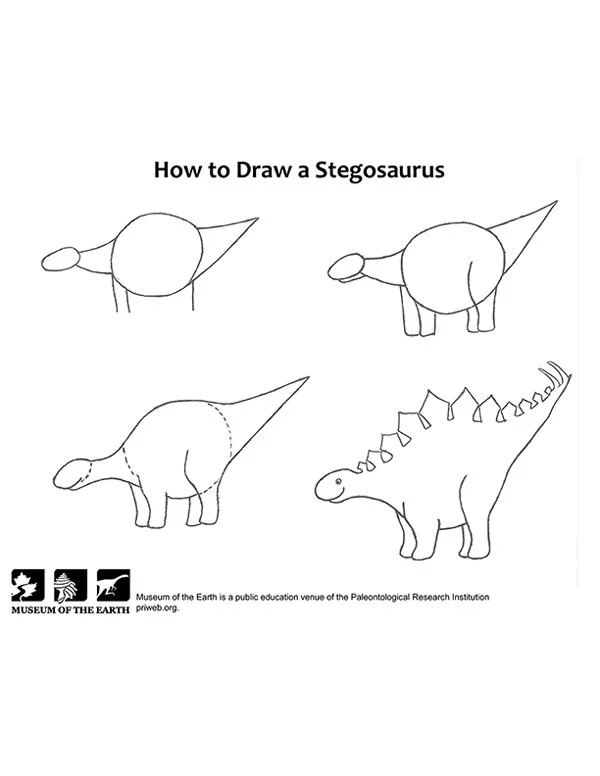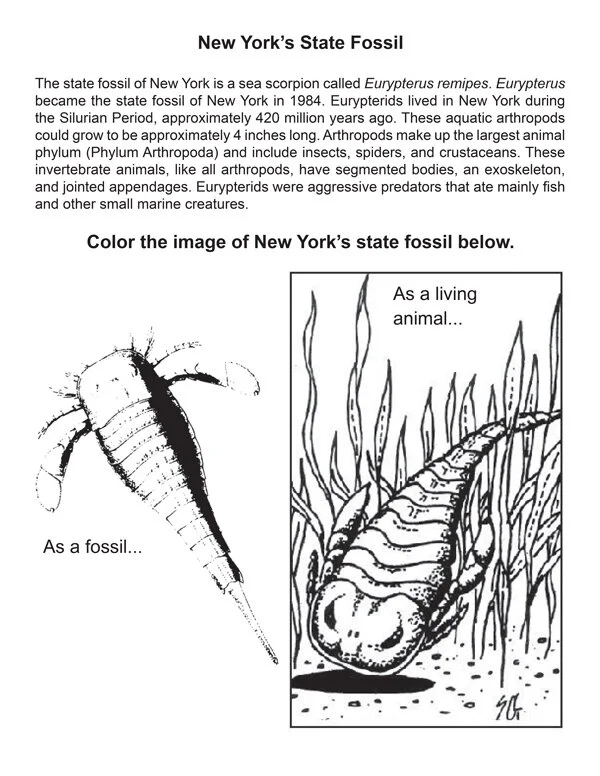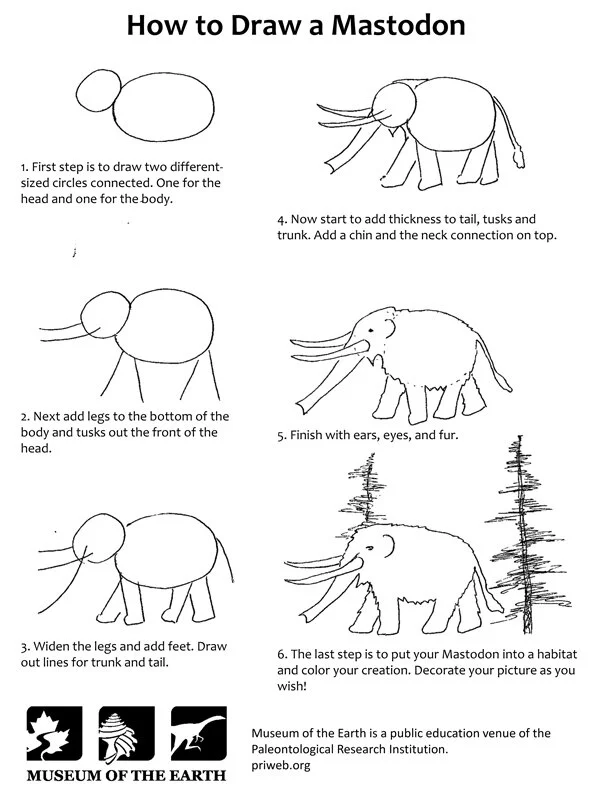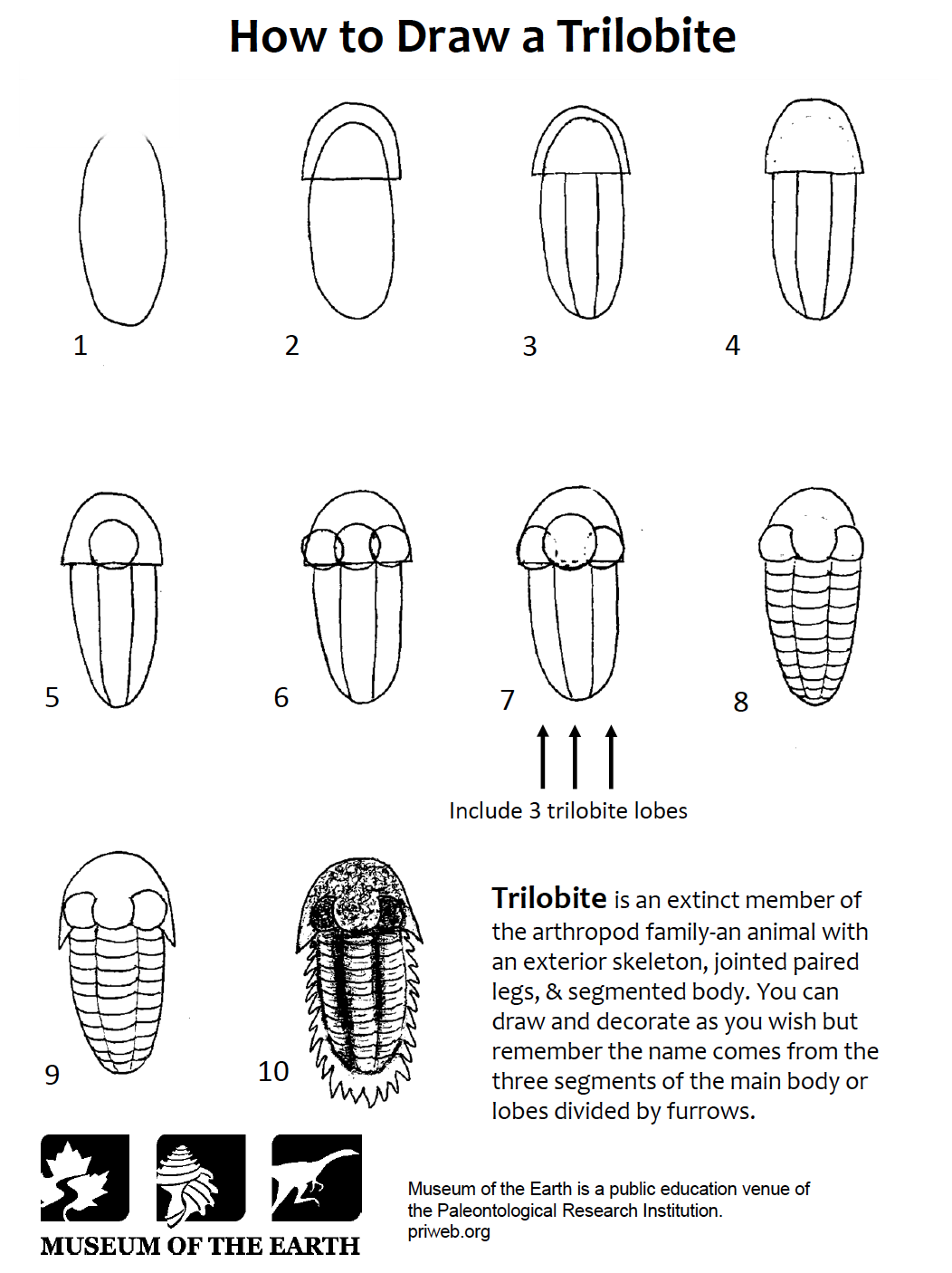Fun Fossil Activities
Enjoy these fun fossil activities that you and your family can complete at home.
April 13, 2020 (Updated Nov 5, 2021)
Junior Illustrator Activities
During the summer of 2021, Museum of the Earth ran an illustration club to accompany its temporary exhibit on Women in Paleontology. Many of the first women involved in paleontology contributed as scientific illustrators, a profession that exists and is important to this day. Though scientific illustrators are well educated about the subjects they draw and very skilled, anyone can look closely at the world the way they do and learn something about it!
Though the illustration club was aimed at adults and teens, during each class an activity was available for the younger members of the audience. They featured different fossils and all kinds of art materials. The coloring pages that went along with those activities are compiled here!
May 29: New York State Fossils and Gems
Learn about New York State gems and fossils in today's Fun Fossil Activity.
Do you remember your state’s tree or maybe the state bird? What about the state fossil? In this issue of Fossil Stuff we will explore New York’s state gem and state fossil as well as its unofficial state dinosaur!
May 27: Ammonite Mad Libs and Collecting
Have fun with an Ammonite "Mad Libs" and learn how to start your own collections in today's Fun Fossil Activity.
Create your own hilarious fossil story with our Ammonite "Mad Libs", then learn about putting together a collection just like we do with fossils at PRI. You can make a collection of rocks, leaves, or just about anything. PRI has a collection of fossils from around the world. Their collection now has over 7 million specimens in it! How big could your collection grow in a few years?
May 25: Life in Devonian New York
Create your own colorful Devonian worlds in today's Fun Fossil Activity.
New York State has a very rich fossil record. Most of the fossils of New York are found in Devonian Shale formations. That's because hundreds of millions of years ago, the area was covered by a shallow sea.
This sea came to be inhabited by invertebrates like brachiopods, conodonts, eurypterids, jellyfish, and trilobites. Local marine vertebrates included arthrodires, chimaeroids, lobe-finned fishes, and lungfish. The sea is now gone, but a bounty of fossils remain from what is known as the Devonian Period about 360 million years ago. What colors would you think the animals of this period would have?
May 22: Paleobotany
Learn about the branch of paleontology that studies plants in today's Fun Fossil Activity.
Learn what paleobotanists have discovered about how plants have evolved over time, make your own plant fossil, try your knowledge in our Paleobotany Crossword, learn about seed dispersal, and make your own whirly bird that works similar to some plant seeds.
May 18: How to draw a Red Fox
Learn how to draw a Red Fox in today's Fun Fossil Activity.
Daisy, one of our Animal Ambassadors at the Cayuga Nature Center, is a Red Fox (Vulpes vulpes). The Red Fox is one of the most widely distributed members of the order Carnivora, being present across the entire Northern Hemisphere. They originated from smaller-sized ancestors from Eurasia during the Middle Villafranchian period (around the end of the Pliocene and the beginning of the Pleistocene). The earliest known fossil specimens of V. vulpes date from 3.4-1.8 million years ago. Foxes colonized North America during or before the Illinoian and Wisconsinan glaciations.
May 15: Fossils and Climate Change
Find out how paleontologists track ancient climate changes in today's Fun Fossil Activity.
As today’s climate is changing, many scientists are working to understand not only why it is changing but also what the effects of climate change will be on the Earth and its life.
Paleontologists are using fossils to provide examples of the effect of climate change on Earth’s past. Understanding Earth’s history can help us predict our impact on global environmental cycles of today and the future. In this issue of Fossil Stuff, you will learn about two kinds of fossils that are helping to shed light on past climate change events.
May 13: Fossil Jumble
Find the fossils in our Fossil Jumble in today's Fun Fossil Activity.
Test your skills as a budding paleontologist with our Fossil Jumble. See how many creatures you can identify from the fossils in our picture. Find out how these creatures from the sea get stuck in this rock from Central New York State.
May 11: Brachiopod vs. Bivalve
In today's Fun Fossil Activity learn about the differences between Brachiopods and Bivalves.
To the untrained eye, one might assume that brachiopods and bivalves belong to the same group. Indeed, many early naturalists considered them to both be mollusks. They are, however, classified as completely different animal groups. Brachiopods belong to Phylum Brachipoda, whereas bivalves belong to Phylum Mollusca, along with snails and cephalopods (e.g., octupuses and squids).
May 8: Understanding the Tree of Life
Learn about the Tree of Life and cladograms in today's Fun Fossil Activity. The Tree of Life is a tool scientists use to show how organisms are related through their similarities and differences. You can also use the Tree of Life to show the diversity, or variety, of life on Earth. In addition, learn how to read a cladogram, which is another tool scientists use to understand the relationships between species.
May 6: Whale Skeletons And Evolution
In today's Fun Fossil Activity, learn about whale evolution and how their skeletons are similar to other mammals. Whales are mammals just like us—their skeletons contain the same bones as humans. Because they evolved over millions of years to live in water, their rear legs have become unnecessary. Can you find the vestigial (remnant) bones of their rear legs in this drawing? Imagine how, over millions of years, the animal slowly changed to make living in the water easier.
May 4: How to Draw a Right Whale
In today's Fun Fossil Activity, learn how to draw a Right Whale like the one that hangs over the main exhibit hall at the Museum of the Earth. For thousands of years whale scientists (cetologists) have known that whales are mammals, but cetacean ancestry remained hidden until recently. With discoveries of fossil whale bones found in Asia over the past 30 years, scientists now know that whales first evolved during the Eocene Epoch approximately 55 million years ago. These primitive whales evolved from a four-legged hoofed mammal. In fact, whales’ closest living relatives are the hoofed hippos, cows, pigs, and camels.
May 1: Birds-Living Dinosaurs
Learn about birds--living decedents of dinosaurs--in today's Fun Fossil Activity. There are approximately 10,000 species of birds alive on Earth today. Did you know that they descend from dinosaurs? Birds come in almost every color and live all across the globe from the Arctic to the Antarctic. They range in size from 2 inches to 9 feet. Have fun with a word scramble game and learn more about birds, their ancestral lineage, and state birds in this Fossil Stuff reprint.
April 29: How To Draw Dinosaurs
Learn how to draw all sorts of dinosaurs in today's Fun Fossil Activity. Every dinosaur is similar in terms of basic body parts, but every species is unique in the size, shape and placement of those pieces. Find out how to combine these pieces into five different types of dinosaurs. Then design your own unique dinosaur! What would your new dinosaur look like?
April 27: How to Draw a Stegosaurus
Today's Fun Fossil Activity is learning how to draw a Stegosaurus like Steggy at the Museum of the Earth. Stegosaurs are herbivorous dinosaurs that lived between 155 and 150 million years ago in the Late Jurassic period. The Museum's life-sized model, nicknamed "Steggy" was built for the 1904 St. Louis World’s Fair. In 1905 it was installed in the Smithsonian Institution’s National Museum of Natural History in Washington, DC, where it was part of the dinosaur exhibits seen by millions of visitors for generations. In 2014, the Smithsonian permanently transferred it to the Museum of the Earth. You can see a time-lapse video of the installation of Steggy at the Museum here: https://www.museumoftheearth.org/exhibit/steggy-the-stegosaurus
April 24: State Fossils
Learn about state fossils in today's Fun Fossil Activity.
Find out what is the official state fossils of your state in this Fossil Stuff newsletter. Become a fossil finder and add your suggestions for states who have not designated one yet. Find our more about New York's state fossil, and play a matching game to the creatures with the states. Which state has the Mastodon (like the one in the Museum of the Earth) as its state fossil?
April 22: Mammal Skulls and Teeth
Find out why mammals have so many different types of teeth in today's Fun Fossil Activity. Mammals eat a lot of different kinds of food from tough grasses to insects to meat and often a mix of all. Their teeth and skull shape help them achieve this varied diet. Knowing about these adaptions helps us to discover what an animal might have had in its diet just by looking at their teeth.
April 20: How to Draw a Mastodon
Did you know that the Museum of the Earth has one of the most complete Mastodon skeletons ever recovered? Our Mastodon was found in a pond behind a house in Hyde Park, New York. He lived there around 13,000 years ago. Today's Fun Fossil Activity is learning how to draw a Mastodon like ours.
April 15: Trilobite Matching Game
Today's Fun Fossil Activity is a matching game that features different types of trilobites. Cut out and color the trilobites and then play memory by laying out the cards face down. Flip over cards and use your memory to find pairs of trilobites.
One of the trilobites is Greenops, which was featured in a recent Fossils@Home video. How many of these trilobites can you find on our 3D trilobite Virtual Collection page?
April 13: How to Draw a Trilobite!
Trilobites are extinct members of the arthropod phylum, animals with an exterior skeleton, jointed paired legs, & segmented body. You can draw and decorate as you wish but remember the name comes from the three segments of the main body, which consist of lobes divided by furrows.



